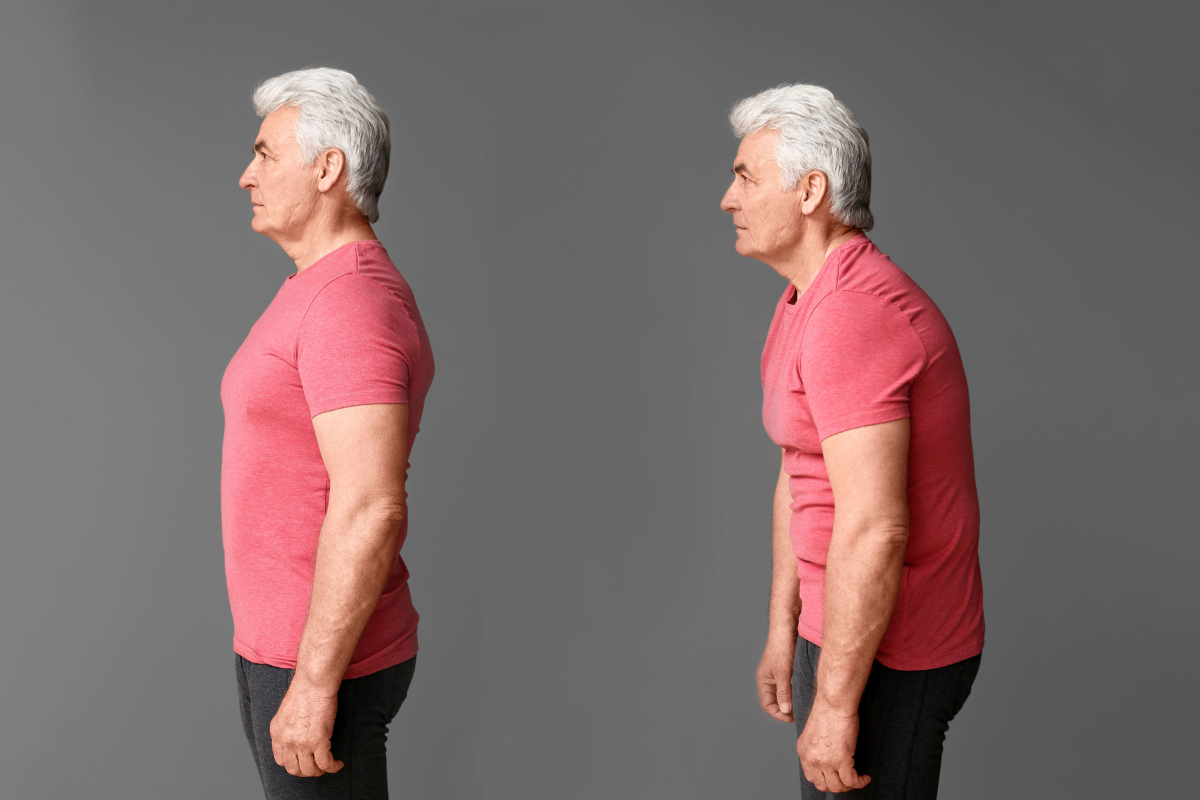Posture plays a powerful role in our overall health, yet many people don’t give it a second thought—until pain or discomfort sets in. In this article, we’ll define what posture really is, explore how it affects your health, and provide tips for improving posture while sitting and standing.
Ready to take the first step toward better posture and less joint pain? Schedule an appointment with Precision Orthopaedic Specialties at one of our convenient locations in Chardon, Chagrin Falls, or Middlefield, Ohio—your trusted partner in orthopaedic care for all ages!

Posture refers to the position in which you hold your body while sitting, standing, or lying down. There are two primary types: static posture and dynamic posture.
Static posture is how you hold yourself when you’re not moving—such as standing still or sitting at a desk. Dynamic posture, on the other hand, refers to how you hold yourself when you’re in motion, such as walking, running, or bending.
Good posture means your body is aligned properly, with your bones, joints, and muscles all working efficiently. When your body is in correct posture, it helps distribute weight evenly, minimizes strain on ligaments and muscles, and keeps your spine in its natural curve.
Poor posture can lead to a range of musculoskeletal problems over time. Slouching or hunching forward can cause neck pain, lower back issues, and discomfort in the shoulders and hips. Over time, these habits can contribute to wear and tear on joints and increased risk of injury—especially for athletes or active adults.
Prolonged bad posture can also cause your abdominal muscles and core muscles to weaken. This results in your body relying more on passive structures like ligaments and bones rather than active muscle engagement, which leads to instability and discomfort. In severe cases, poor posture can even affect breathing and digestion.
On the other hand, when you maintain good posture, you help protect your joints, improve balance, and even boost your energy levels. It’s also one of the most effective ways to relieve muscle tension and avoid chronic pain conditions.
Improving your posture starts with body awareness. Becoming mindful of how you sit, stand, and move is the first step to making meaningful changes. Here are a few foundational tips:
Remember, it may take a few weeks to begin seeing results from these adjustments, but consistency is key.
In today’s world, many people spend long hours sitting—whether at a desk, in the car, or relaxing at home. Here’s how to improve your posture while seated:
If you work at a desk, ergonomic modifications can make a big difference in maintaining proper posture throughout the day.
Standing with correct posture doesn’t mean being rigid or stiff. Instead, focus on alignment and balance:
When done consistently, standing with proper alignment can help reduce fatigue and prevent joint pain—especially in the knees, hips, and back.
Regular exercise plays a vital role in correcting bad posture and strengthening the muscles that support alignment. The following exercises can be performed a few times per week to enhance your static posture and dynamic posture:
Start slowly and progress gradually. Within a few weeks, you’ll likely notice increased comfort and better alignment throughout your day.
Whether you’re an athlete recovering from strain, an adult experiencing joint discomfort, or someone who just wants to feel and move better, improving your posture can significantly impact your health. At Precision Orthopaedic Specialties, our expert team is here to help you identify the root causes of discomfort related to poor posture and develop a personalized treatment plan.
We proudly serve patients in Chardon, Chagrin Falls, and Middlefield, Ohio, offering specialized orthopaedic care for people of all ages. If you’re ready to feel stronger, move better, and live more comfortably, schedule an appointment with us today. Let’s work together to build the foundation for a healthier, more aligned future.
Medically reviewed by Brian Filisky, D.C.
Book Your Appointment
Precision Orthopaedic Specialties is a leading provider of orthopaedic surgery, sports medicine, podiatry, physical therapy, athletic training, and state-of-the-art medical imaging including MRI.